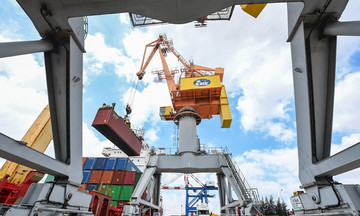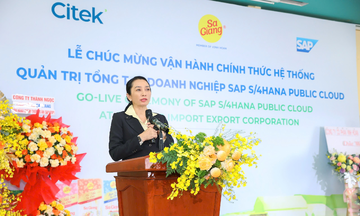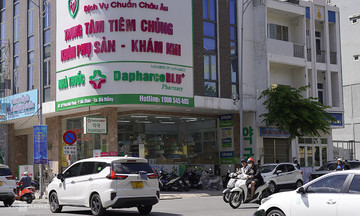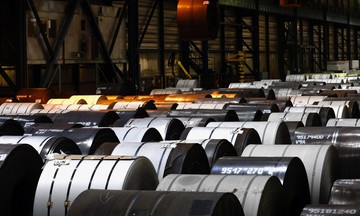In the summer of 2018, Nguyen Thanh Hien (born in 1971) visited Thanh Binh and Tam Nong districts in Dong Thap province. The image that stuck with him was of fields of ripe, red chili peppers left to wither. With no buyers and prices too low to cover harvesting costs, farmers abandoned their crops, some even uprooting the plants to switch to other vegetables.
"The average chili price is 30,000-32,000 VND/kg, but that year it dropped to 8,000-9,000 VND/kg, while the production cost was already 15,000 VND/kg," Hien recalled.
Instead of seeking a "rescue" for the agricultural products, Hien aimed to increase their value. He believed that selling raw produce wouldn't ensure sustainable value for Vietnamese agriculture. "To create long-term livelihoods, we need to focus on deep processing, which helps with preservation and expands the market," he thought.
He put his words into action, starting a business with chili peppers and founding the Chilica brand.
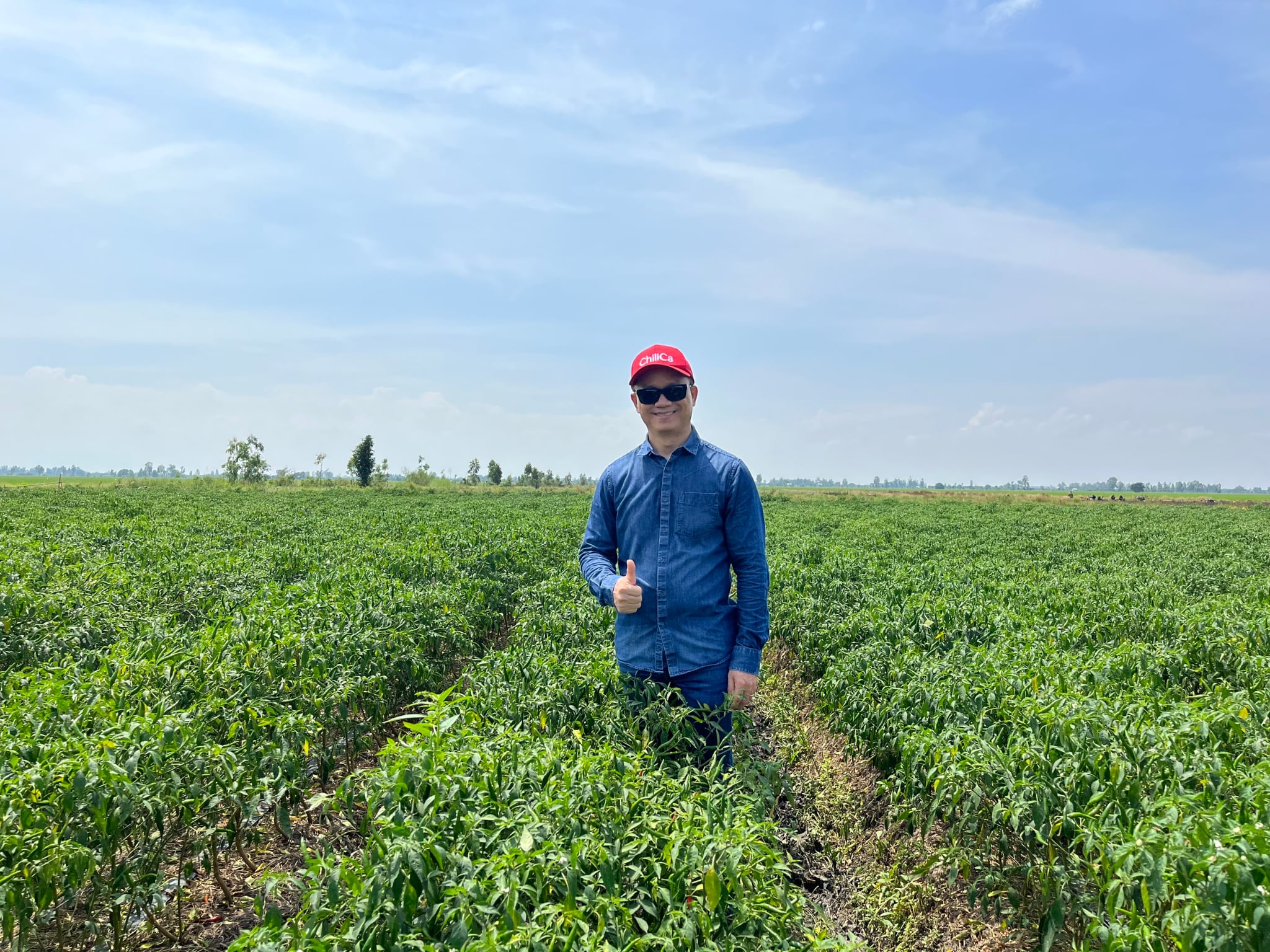 |
Chilica founder Nguyen Thanh Hien at a chili pepper field in Dong Thap. Photo: NVCC |
Chilica founder Nguyen Thanh Hien at a chili pepper field in Dong Thap. Photo: NVCC
Investing 2 million USD in chili fermentation experiments
Chili peppers have a distinctive flavor appreciated in many markets. Hien's initial idea was to create a chili sauce that retained the flavor and color of Vietnamese chili peppers, had a long shelf life, and met international standards.
With over 30 years of experience applying microorganisms in aquaculture, he decided to experiment with chili fermentation, combining scientific knowledge with traditional methods like pickling. "Natural fermentation for preserving chili peppers is time-consuming, labor-intensive, and doesn't allow for large-scale production initially, so many large enterprises don't invest in this direction. This is a niche for the Chilica brand to develop," the founder said.
When he shared this idea with friends and family, they all called him "foolish" due to the challenges and unique nature of the technology.
"I was determined to experiment, believing that the flavor of Vietnamese agricultural products could reach far with the right technology investment," Hien said.
In 2018, he began researching formulas and experimenting with fermentation batches. The process was fraught with failures: the chili peppers would foam, separate into layers, become too sour, or not preserve well. Because fermentation takes at least a year, each mistake meant months of lost experimentation. To achieve the right flavor, the company also had to cultivate its own rice vinegar, a crucial and challenging step that directly affected the final product's quality. To meet production demands, Hien invested 2 million USD in building a 1,000 m2 factory in Binh Chanh (TP HCM), equipping it with a 20 billion VND production system.
To create chili sauces with a distinctive spicy flavor, Chilica uses only chili peppers grown in the Thanh Binh and Tam Nong regions of Dong Thap. For high-quality fermented chili sauce, the peppers must be processed immediately after harvest to maintain their freshness. Therefore, the factory needs to be close to the source, within a 300 km radius and a maximum travel time of 6 hours.
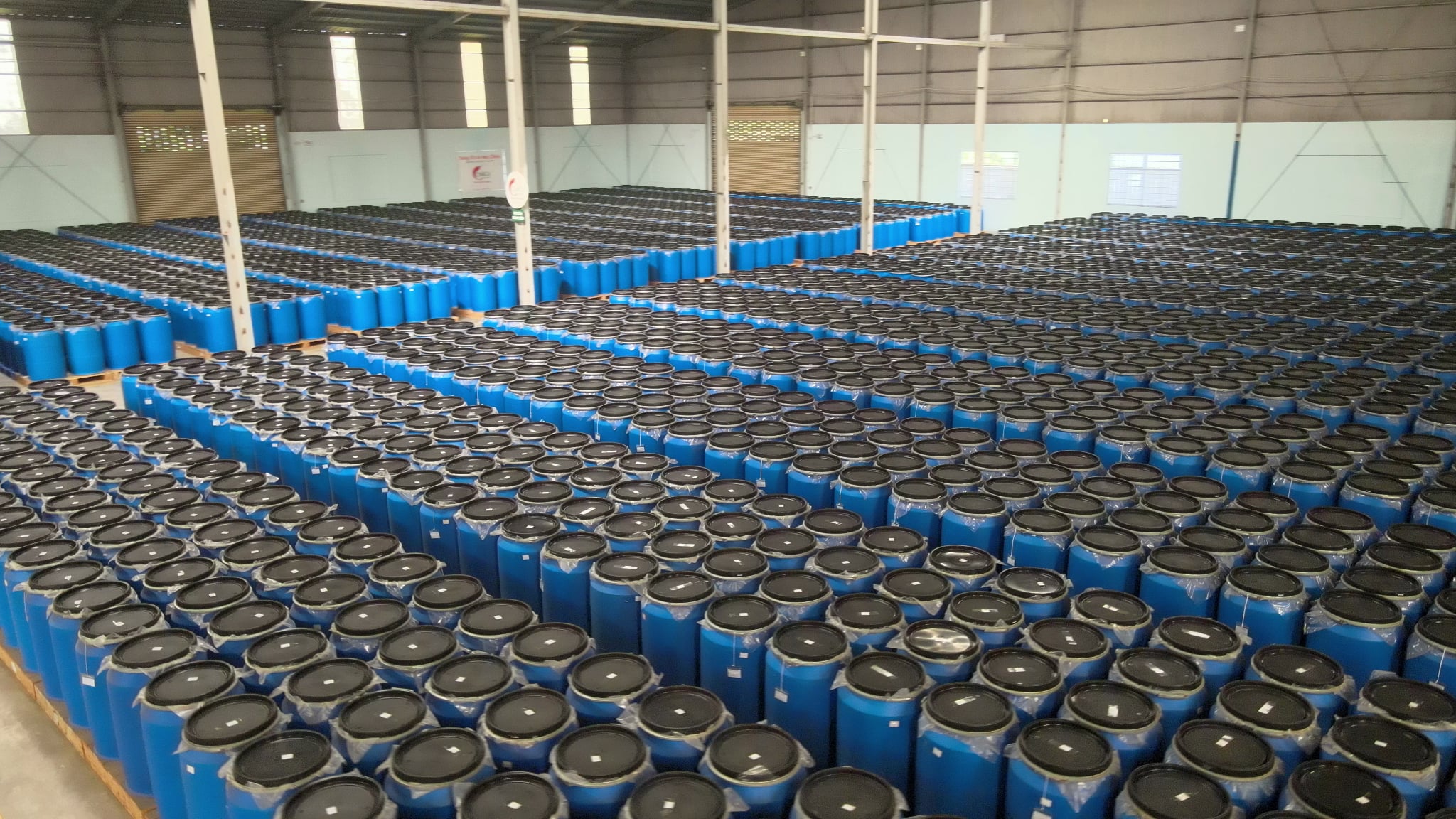 |
Chili peppers being fermented at the Chilica factory. Photo: NVCC |
Chili peppers being fermented at the Chilica factory. Photo: NVCC
In 6/2020, after two years of experimentation, the first Chilica chili sauces were launched in three flavors: minced chili, minced chili with garlic, and pure natural chili sauce. The key difference is the natural fermentation process using rice vinegar for 12 months without heat treatment.
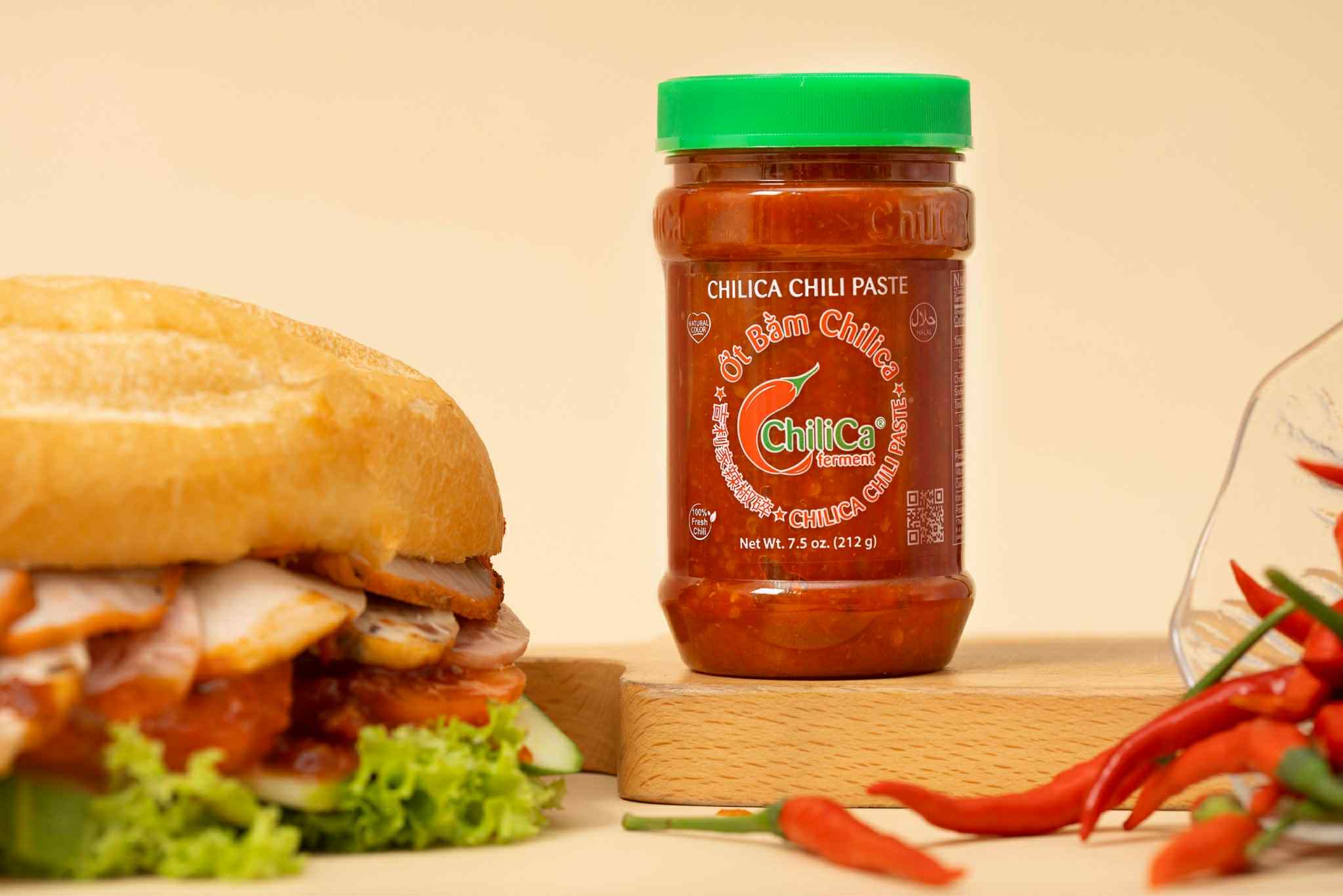 |
Minced chili product under the Chilica brand. Photo: NVCC |
Minced chili product under the Chilica brand. Photo: NVCC
According to Nguyen Thanh Hien, most current chili sauces are cooked to kill bacteria, which diminishes the color and flavor of fresh chili, requiring manufacturers to add colorings, flavorings, and additives. In contrast, Chilica's fermentation technology preserves the color, flavor, and nutrients of the chili peppers while meeting international food safety standards. Only two companies worldwide use this method, including the famous Sriracha brand in the US.
The product launched during the Covid-19 pandemic when the domestic market was stagnant. Chilica shifted to e-commerce and sought international opportunities. In the latter half of 2020, Hien sent over 100 emails introducing the product to Vietnamese trade offices in various countries. The first positive responses came from Cambodia, Japan, Singapore, and the Netherlands after Chilica chili sauce was showcased at trade fairs and Vietnamese product weeks. That same year, the company participated in 22 domestic and international trade fairs despite the pandemic's impact.
This aggressive marketing strategy led to international recognition. By 2023, the company achieved a revenue of 25 billion VND with a net profit of 6 billion VND. In the first half of 2025, revenue increased to 35 billion VND. Currently, 98% of Chilica's revenue comes from exports, with distribution networks in 13 countries, primarily the US, Canada, the EU, the Middle East, Australia, South Korea, Russia, and China. The trademark is protected in 37 countries, paving the way for global market expansion.
To meet growing demand, the company expanded its factory from 1,000 to 10,000 m2, with a capacity of 30 tons of fresh chili per day, 10 times higher than initially.
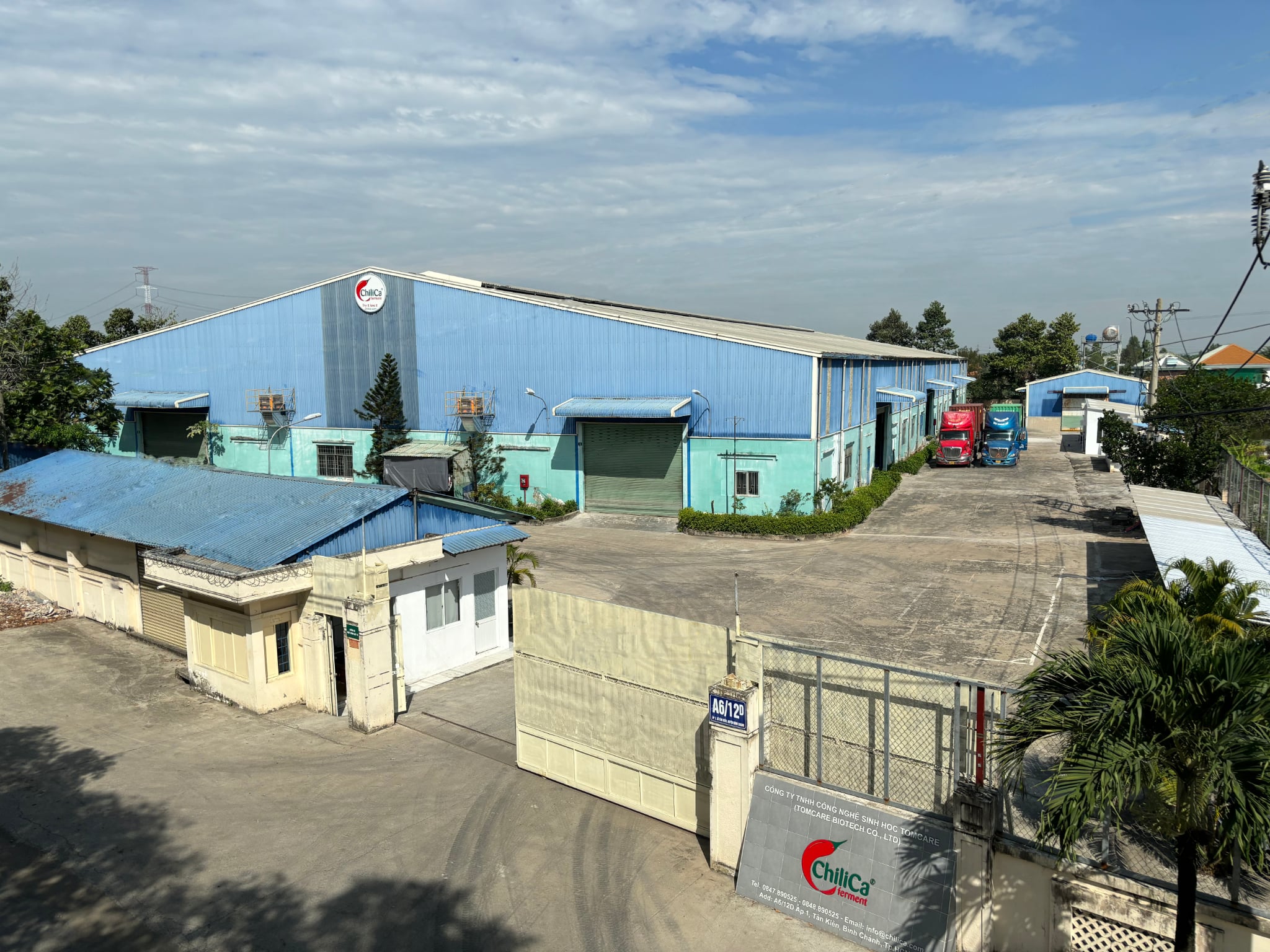 |
The Chilica factory in Binh Chanh. Photo: NVCC |
The Chilica factory in Binh Chanh. Photo: NVCC
Widespread marketing leads to tenfold growth
After establishing its presence in the international market, Chilica began focusing on domestic distribution. The product is now available in major supermarket chains like Aeon Mall, Emart, Lotte Mart, Mega Market, BigC, and health food chains like Farmer Market and Hoa Bien. The company also thrives in e-commerce, from Shopee, Tiki, Lazada, and TikTok to Amazon, Walmart (US), Alibaba (China), and Ozon (Russia). This multi-channel presence allows the brand to reach both domestic and international consumers, expanding brand awareness and market share.
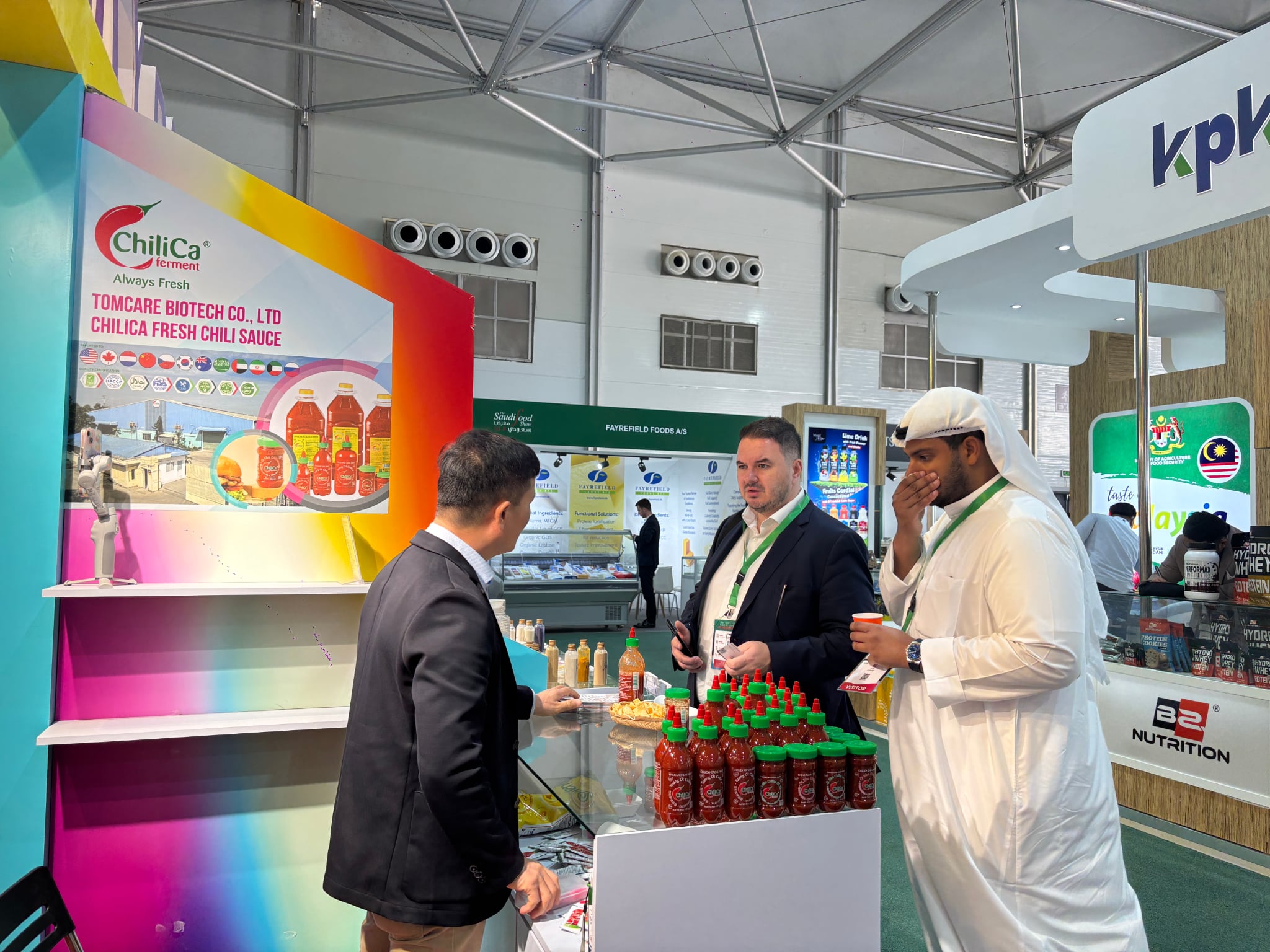 |
Hien introduces chili sauce products at a trade fair. Photo: NVCC |
Hien introduces chili sauce products at a trade fair. Photo: NVCC
Strengthening the supply chain
Unlike many businesses that purchase based on market prices, Nguyen Thanh Hien signs fixed-price contracts at 30,000 VND/kg, providing farmers with stability. This price ensures profitability for farmers and encourages them to maintain stable cultivation areas. When market prices rise, farmers are still free to sell elsewhere.
This guaranteed pricing not only protects farmers from price fluctuations but also creates a foundation for a sustainable supply chain. Chilica requires 300-400 tons of fresh chili annually, and this demand is expected to increase as the factory expands. According to Hien, Chilica's goal is not only to create unique products but also to solve output issues for farmers, linking technology with local agricultural produce.
"The agricultural processing sector in Vietnam is still lacking. If it develops well, it will be a strong support for agriculture," he said.
In the future, Chilica plans to further increase production capacity and strengthen its domestic market presence. The founder is confident because, besides fish sauce and salt, chili is the most commonly used condiment in 25 million Vietnamese households.
"Chilica's growth formula is threefold: choosing a niche product, investing in deep processing technology, and collaborating with farmers to create sustainable value. By combining technology with local agricultural products, we give them a new life and expand Vietnam's presence on the global map," the founder concluded.
Yen Chi
If you have a similar story about your business or know of an organization striving for innovation, please share it with us through the link here. Suitable contributions will be selected for publication on the website, inspiring and spreading the spirit of growth to the Vietnamese business community.






